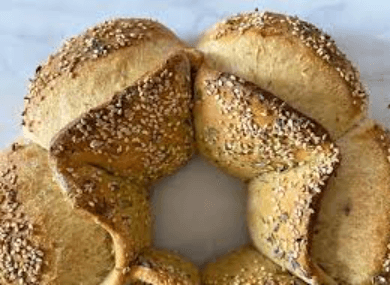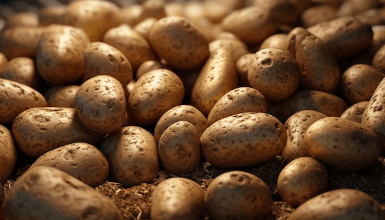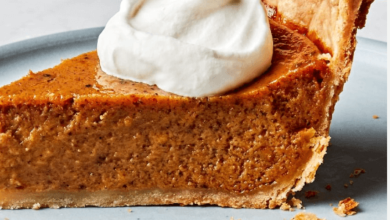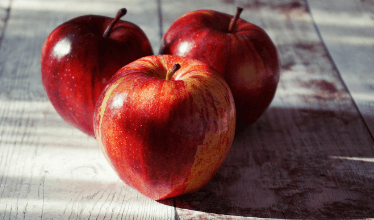7 Secrets to Baking Perfect Bread at Home: Discover Breademii

Baking bread at home brings a sense of accomplishment and warmth that few other cooking experiences can match. The aroma of freshly baked bread filling your home is unparalleled in its ability to create a cozy, inviting atmosphere. Whether you’re a seasoned baker or a novice looking to dip your toes into the world of homemade bread, Breademii is your ultimate guide. This article explores the secrets to baking perfect bread at home, from selecting the right ingredients to mastering baking techniques.
The Basics of Breademii
Breademii is not just about baking bread; it’s about understanding the science and art behind each loaf. From the ancient times of unleavened flatbreads to the wide variety of bread available today, the journey of bread making is rich with history and innovation. At its core, bread making requires few tools—a mixing bowl, a sturdy spoon, and a baking surface. Yet, the magic lies in how these tools are used.
Read also: Qwesrdex.com: Unveiling the Future of Online Innovation
Ingredients for Success
The foundation of great bread lies in its ingredients. High-quality flour is crucial, with different types lending different textures and flavors to the bread. Water activates the yeast and combines with the flour to form gluten, which gives bread its structure. Yeast, the heart of it, is responsible for the rise and texture of your bread, while salt and other flavor enhancers like herbs and spices add depth and taste.
Kneading and Shaping Your Way to Perfection
Kneading develops the gluten in the dough, contributing to the bread’s texture and strength. Techniques vary, from traditional hand-kneading to using a stand mixer, each with its own benefits. Shaping the dough is equally important, as it affects the final appearance and structure of the bread. Proofing, or allowing the dough to rise, is crucial for a light, airy loaf.
Baking Techniques and Temperatures
Understanding your oven is key to successful bread baking. Preheating and using baking stones can create a consistent, hot environment that mimics professional bread ovens. Steam introduced at the beginning of baking helps achieve a crispy crust, a hallmark of artisan breads. The perfect baking temperature is critical for achieving the desired texture and color.
Troubleshooting Common Bread Baking Issues
Even experienced bakers encounter issues like bread not rising or dough being overproofed. Understanding these common problems and how to solve them can help prevent future disappointments and lead to better baking outcomes.
Breademii Varieties and Recipes
Breademii encompasses a wide range of bread types, from classic loaves to gluten-free options and sourdough breads. Each type offers unique challenges and rewards, encouraging bakers to explore and expand their repertoire.
Advanced Techniques
Incorporating different grains and seeds, experimenting with hydration levels, and exploring slow fermentation are ways to enhance your bread baking skills and produce unique, flavorful loaves.
The Health Benefits of Homemade Bread
Homemade bread is not only delicious but also healthier than most store-bought options. It’s free from preservatives and can be customized to suit dietary needs and preferences. The process of baking bread can also be therapeutic, offering a satisfying and creative outlet.
Breademii Around the World
Bread is a universal food, with each culture having its own traditions and recipes. Exploring bread from around the world can inspire new ideas and techniques, adding diversity to your baking.
Conclusion
Baking bread at home with Breademii is a rewarding journey filled with discovery, creativity, and delicious results. By understanding the basics, experimenting with ingredients and techniques, and embracing the process, anyone can bake perfect bread at home.
Read also: RDHJGF: The Future Unveiled
FAQs
What is the best flour to use for homemade bread?
The best flour depends on the type of bread you’re baking. For most breads, bread flour is preferred due to its higher protein content, which develops strong gluten. Whole wheat flour adds nutrition and flavor but can make denser bread.
How can I ensure my bread rises properly?
To ensure proper rising, use fresh yeast, maintain an optimal dough temperature (around 75°F-78°F), and allow enough time for the dough to rise until doubled in size.
Why is steam important in baking bread?
Steam in the oven during the initial phase of baking helps keep the surface of the dough moist, allowing it to expand and rise before the crust hardens. It also contributes to a glossy, crispy crust.
Can I make bread without a stand mixer?
Absolutely! Many bakers prefer hand-kneading as it allows for a more tactile understanding of the dough’s development. It can be a more rewarding and meditative process as well.
How do I store homemade bread to keep it fresh?
Store bread in a cool, dry place in a bread box or wrapped in a cloth inside a paper bag. Avoid plastic bags, which can make the crust soft. Bread can also be sliced and frozen for longer storage.
Is homemade bread healthier than store-bought bread?
Yes, homemade bread can be healthier as it contains no preservatives or unnecessary additives. You also have control over the ingredients, allowing you to use whole grains and reduce salt or sugar.
Can I bake bread if I have gluten sensitivity?
Yes, there are many gluten-free flour blends and recipes specifically designed for gluten-free bread baking, allowing everyone to enjoy the pleasures of homemade bread.




